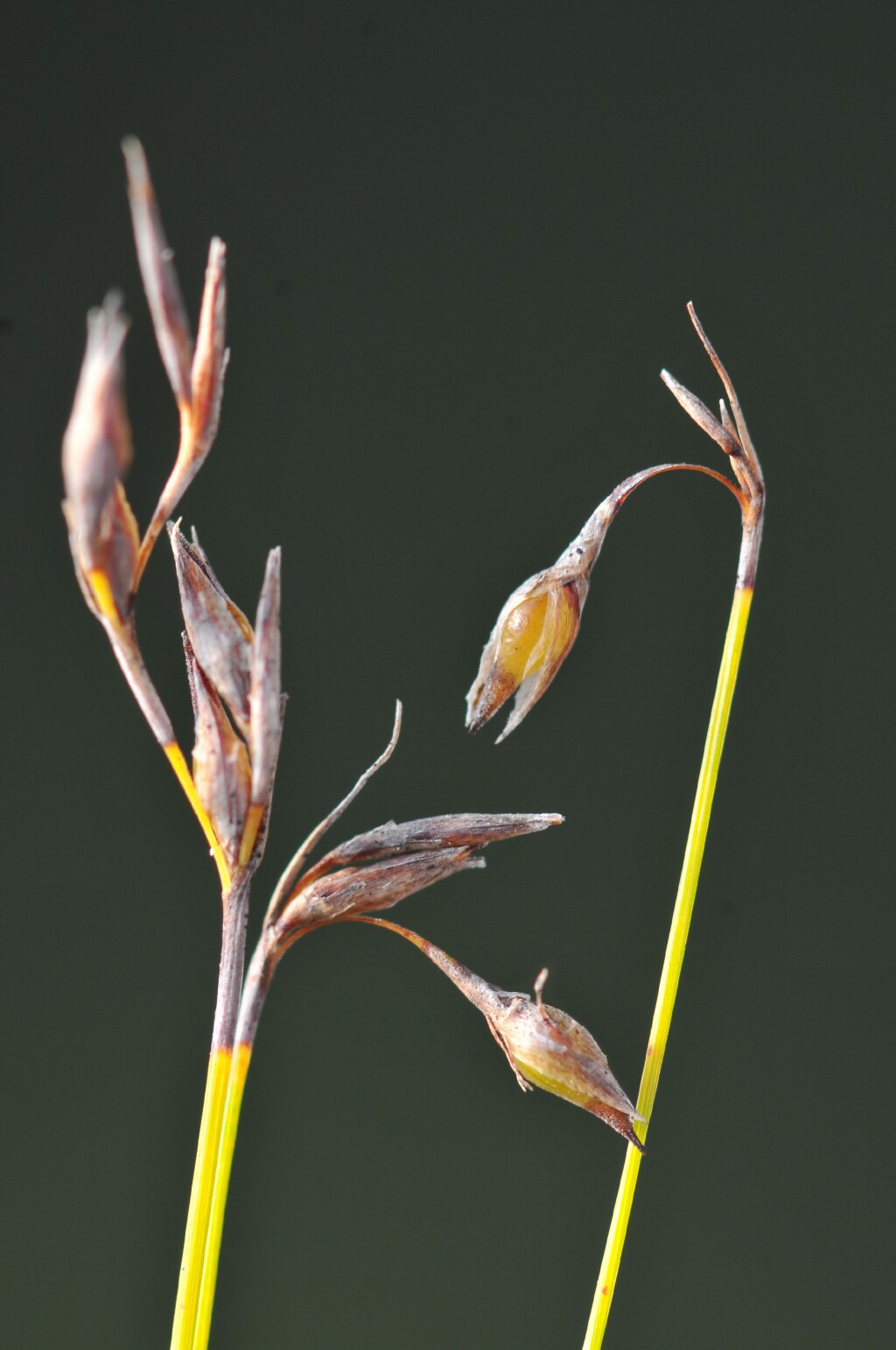Netrostylis
R.L.Barrett, J.J.Bruhl & K.L.WilsonTufted perennials, rhizome tightly clumping to spreading, new culms within a ramet arising slightly higher than the parent culm resulting in a compact candelabrum arrangement. Culms and leaves erect to spreading, terete or quadrangular, capilliform and decumbent to rigid and erect. Leaves basal; blade usually strongly reduced on the sheath (rarely to 3 cm long), ligule present, cleft. Inflorescence an open or contracted panicle, usually pseudolateral, with few spikelets. Primary bracts usually short, occasionally long, sheathing. Spikelets with several spirally arranged, long persistent glumes of increasing length, upper 1 or 2 glumes each subtending a flower. Lower flower functionally male, upper flower(s) bisexual. Bristles absent or filiform. Hypogynous scales present, united and thickened only at the base, forming a small ring or cup fused to the base of the nutlet, sometimes producing 3 flat scales or up to 5 filiform, barbellulate bristles; Stamens 3. Style (2-)3-fid, hairy; style base distinct, much thickened, persistent, papillose to tuberculate. Nutlet ovate, rounded 3-angular, surface usually smooth below, usually scabrous on persistent, spindle-shaped style base. (Adapted from Barrett et al. 2021).
Also WA, SA, Qld, NSW, Tas. Also North Island in New Zealand.
A genus of currently 2 described species, and several undescribed species.
Previously included under Tetraria, a genus now excluded from Australia and placed in a separate subtribe. More closely related to Lepidosperma and Machaerina (Barrett et al. 2021).
 Spinning
Spinning